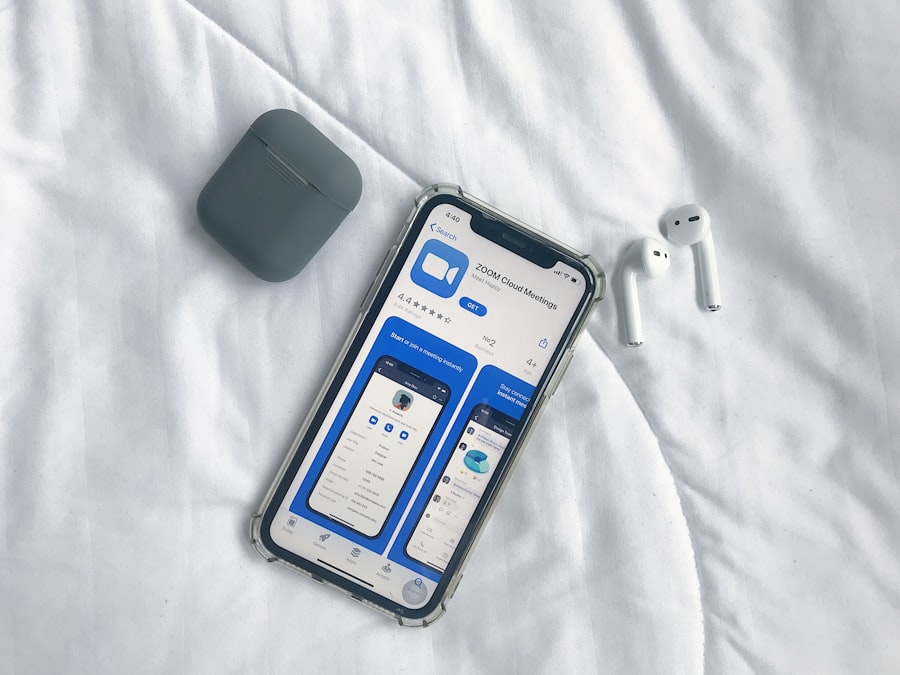Embarking on the journey to secure a fellowship can be both exhilarating and daunting. The first step in this process is to thoroughly understand the specific requirements set forth by the fellowship program. Each fellowship has its own unique criteria, which may include academic qualifications, professional experience, and specific skills or competencies.
It is essential to meticulously review the fellowship’s official website and any accompanying documentation to grasp the nuances of what is expected. This includes understanding eligibility criteria, application deadlines, and any required supplementary materials. By familiarizing yourself with these details, you can tailor your application to align closely with the fellowship’s objectives, thereby enhancing your chances of success.
Moreover, understanding the fellowship requirements extends beyond mere compliance; it involves a deep comprehension of the program’s ethos and goals. Many fellowships are designed to foster specific areas of research, community service, or professional development. Therefore, it is crucial to reflect on how your own aspirations and experiences resonate with the fellowship’s mission.
Engaging with past fellows or program alumni can provide invaluable insights into the application process and the fellowship experience itself. This proactive approach not only equips you with practical knowledge but also helps you articulate a compelling narrative that aligns your personal journey with the fellowship’s overarching vision.
Key Takeaways
- Fellowship requirements vary, so carefully review and understand the specific qualifications and criteria before applying.
- Craft a compelling personal statement that highlights your unique experiences, skills, and passion for the fellowship’s mission.
- Highlight your achievements and contributions in a clear and concise manner, focusing on the impact you have made in your field.
- Demonstrate your fit with the fellowship’s mission and values by showcasing how your goals align with theirs and how you can contribute to their cause.
- Secure strong letters of recommendation from individuals who can speak to your qualifications, character, and potential for success in the fellowship.
- Polish your application by proofreading for errors, ensuring all required materials are included, and submitting before the deadline.
Crafting a Compelling Personal Statement
The personal statement is often the heart of your fellowship application, serving as a platform to convey your unique story and aspirations. Crafting a compelling personal statement requires introspection and clarity of purpose. Begin by reflecting on your motivations for applying to the fellowship and how it aligns with your long-term goals.
This reflection should encompass both personal and professional dimensions, allowing you to present a holistic view of who you are as an individual. A well-structured personal statement should weave together your experiences, values, and ambitions in a narrative that captivates the reader’s attention while providing insight into your character. In addition to articulating your motivations, it is essential to demonstrate how your experiences have shaped your perspective and prepared you for the challenges ahead.
Use specific anecdotes to illustrate key moments in your life that have influenced your path. Whether it’s a transformative volunteer experience, a challenging academic project, or a pivotal moment in your career, these stories can serve as powerful touchpoints that resonate with the selection committee. Furthermore, ensure that your writing is clear, concise, and free of jargon; this will make your statement more accessible and engaging.
Ultimately, a compelling personal statement should not only reflect who you are but also convey why you are an ideal candidate for the fellowship.
Highlighting Your Achievements and Contributions

When applying for a fellowship, it is imperative to highlight your achievements and contributions in a manner that underscores your qualifications and potential impact. This section of your application should not merely list accomplishments but rather contextualize them within the framework of the fellowship’s goals. For instance, if the fellowship emphasizes leadership development, you might discuss specific instances where you took initiative or led a project that resulted in meaningful change.
By framing your achievements in this way, you demonstrate not only what you have accomplished but also how those accomplishments align with the fellowship’s mission. Additionally, it is important to reflect on the broader implications of your contributions. Consider how your work has affected others or contributed to a larger cause.
This could involve discussing community service projects, research initiatives, or professional roles where you made a significant impact. By articulating the significance of your contributions, you provide evidence of your commitment to making a difference in your field or community. Remember that fellowships often seek candidates who are not only accomplished but also possess a vision for future contributions; thus, linking past achievements to future aspirations can create a compelling narrative that resonates with selection committees.
Demonstrating Your Fit with the Fellowship’s Mission and Values
A critical aspect of any successful fellowship application is demonstrating how well you fit with the program’s mission and values. This requires a thoughtful analysis of what the fellowship stands for and how your own beliefs and goals align with its objectives. Start by researching the fellowship’s history, its founding principles, and any notable projects or initiatives it has undertaken.
Understanding these elements will enable you to articulate why you are drawn to this particular fellowship and how you envision contributing to its mission. This alignment is not only about showcasing shared values but also about illustrating how your unique perspective can enhance the fellowship community. In addition to aligning your values with those of the fellowship, it is equally important to convey how you plan to engage with its community once accepted.
Fellowships often foster collaboration among diverse individuals who share a common purpose; therefore, expressing a willingness to contribute to this collaborative environment can set you apart from other candidates. Discussing specific ways in which you intend to participate—whether through mentorship, knowledge sharing, or community engagement—can demonstrate your commitment to being an active member of the fellowship cohort. Ultimately, showcasing this fit not only strengthens your application but also reflects a genuine enthusiasm for being part of something larger than yourself.
Securing Strong Letters of Recommendation
Letters of recommendation play a pivotal role in reinforcing your application by providing external validation of your skills, character, and potential. To secure strong letters, it is essential to choose recommenders who know you well and can speak authentically about your abilities and contributions. Ideally, these individuals should be familiar with your work ethic, accomplishments, and aspirations—whether they are professors, employers, or mentors who have witnessed your growth firsthand.
When approaching potential recommenders, be clear about why you are seeking their support and how their insights can enhance your application. Once you have selected your recommenders, it is beneficial to provide them with context about the fellowship and what aspects of your background you would like them to emphasize. Sharing your personal statement or outlining key achievements can help them tailor their letters to align with the fellowship’s requirements.
Additionally, giving them ample time to write their letters is crucial; this not only shows respect for their time but also allows them to craft thoughtful recommendations rather than rushed ones. Strong letters of recommendation can significantly bolster your application by providing a nuanced perspective on your qualifications and potential contributions to the fellowship community.
Polishing Your Application and Submitting on Time

Polishing Your Application
The final stage of preparing for a fellowship application involves meticulous polishing and ensuring timely submission. This process begins with reviewing all components of your application for clarity, coherence, and consistency. Each element—from your personal statement to your resume—should work harmoniously to present a cohesive narrative about who you are as a candidate.
Seeking Feedback and Refining Your Application
It is advisable to seek feedback from trusted peers or mentors who can provide constructive criticism and help identify areas for improvement. Their fresh perspectives can be invaluable in refining your application before submission. In addition to content refinement, adhering to submission deadlines is paramount in the application process.
Managing Your Time Effectively
Create a timeline that outlines all necessary tasks leading up to the deadline, including drafting, revising, gathering letters of recommendation, and finalizing supplementary materials. This proactive approach will help alleviate last-minute stress and ensure that every aspect of your application receives the attention it deserves. Remember that submitting an incomplete or poorly presented application can undermine even the most impressive qualifications; therefore, taking the time to polish every detail is essential for making a strong impression on the selection committee.
Presenting Yourself as a Strong Candidate
By approaching this final stage with diligence and care, you position yourself as a serious candidate ready to embrace the opportunities that lie ahead through the fellowship experience.
If you’re seeking further guidance on crafting an effective fellowship application, you might find the article “Apply for EMC’s TLCMDI India Case Competition” particularly useful. This article provides insights into the application process for a competitive case competition, which can be quite similar to fellowship applications in terms of the detail and specificity required. Understanding the nuances of such applications can significantly enhance your approach to writing a winning fellowship application. You can read more about it by visiting Apply for EMC’s TLCMDI India Case Competition. This resource is invaluable for anyone looking to refine their application skills and increase their chances of success in various academic or professional opportunities.
FAQs
What is a fellowship application?
A fellowship application is a formal request for financial support to pursue a specific academic or professional goal, such as research, study, or professional development.
What are the key components of a winning fellowship application?
A winning fellowship application typically includes a strong personal statement, a well-defined project proposal, letters of recommendation, and a clear demonstration of how the fellowship will contribute to the applicant’s academic or professional development.
How important is the personal statement in a fellowship application?
The personal statement is a crucial component of a fellowship application, as it provides the selection committee with insight into the applicant’s background, goals, and motivation for applying for the fellowship.
What should be included in a project proposal for a fellowship application?
A project proposal for a fellowship application should include a clear research or study plan, a timeline for completion, and a description of the potential impact or outcomes of the proposed project.
How should letters of recommendation be approached in a fellowship application?
Letters of recommendation should be solicited from individuals who can speak to the applicant’s academic or professional qualifications, character, and potential for success in the proposed fellowship. It is important to choose recommenders who can provide specific examples and insights into the applicant’s abilities and achievements.
What are some common mistakes to avoid in a fellowship application?
Common mistakes to avoid in a fellowship application include submitting a generic or unfocused personal statement, failing to tailor the application to the specific fellowship opportunity, and neglecting to proofread and edit the application for errors. It is also important to adhere to the application guidelines and deadlines provided by the fellowship program.


























